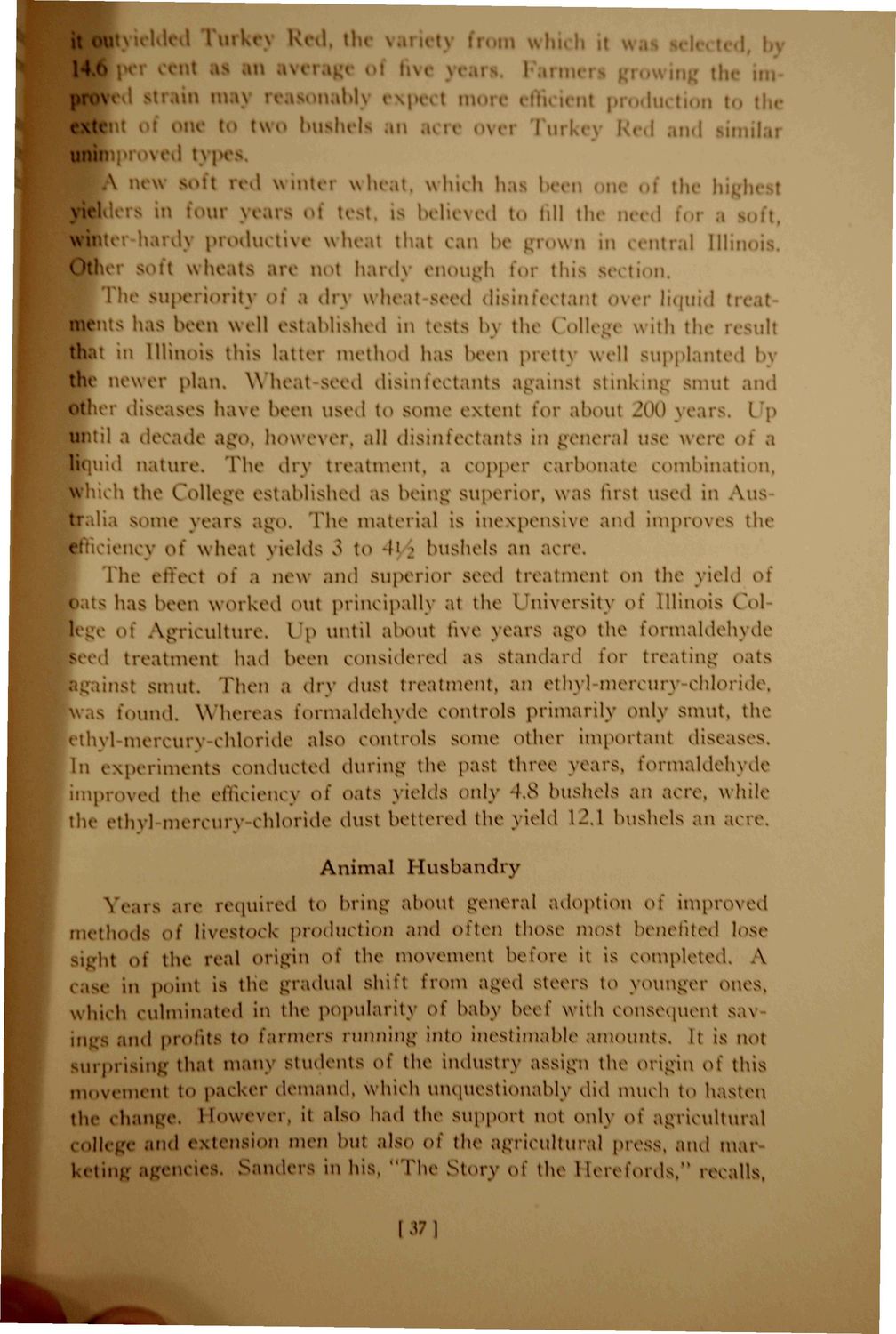| |
| |
Caption: Booklet - One Hundred Million (Impact of UI) (1931)
This is a reduced-resolution page image for fast online browsing.

EXTRACTED TEXT FROM PAGE:
I 1 R e d , ll • v A ivrr.i I |{ i in hlj e \ | u I n to I to h bushels n \ i I ink I I | mil; uni It} A i t I \\ in which 1 I the h h< v I i test is ! lu\ I to fill the n < win I) | In wh t that i n b n in nt il Illin t win i n not h; l\ enough I i. lhe i\ \ w heat I d in tant r1 It tm < has been well i tabl heel in t \ the ( I K with th It th n lllin - tins latt< meth< I has 1 n prett v 1 suj 1 1 by newer plan, Wheat s d disinfectants a] inst stinkin < mut and tin have I n used to »me extent i i al ut K ) U\ until a d nh igo, howev* ill disinf( tants in general use \ ire i liquid natui . The dr) treatment, copper carbonate imbination, which the ( stablished as being superior, was first used in Au tralia me years ag . Tin material is inexpensive and impro\ the 1 oin wheat yields 3 to I / bushels an acre, The effect of a now and superior seed treatment on the yield has boon worked out principal^ at the University oi Illinois ( flit • Agriculture, Up until about five years ago tho formaldehyde 1 tr itment had been considered as standard for treating oats tins! smut, Hien a dry dust treatment, an ethyl-mercury chloride, v found, Whereas I rmaldehyde i mtrols primarily only smut, the hyl mei urv chloride also controls some other important diseases. In experiments conducted during the past three years, formaldehyde improved the efficiency of oats yields only 4.8 bushels an acre, while tin ethvl mercury chloride dust bettered the yield 12.1 bushels an a e, < Animal H u s b a n d s \ ars arc required to bring about general adoption of improved methods of livestock production and often those most benefited lose ight of the i il origin of the movement before it is completed, A in point is the gradual shin from aged steers to younger ones, wli h culminated in the popularity of baby beef with consequent sa\ uid profit to farmers running into inestimable amounts, It is not m mpiis'm;: that man) student of the industrj assign the origin of this movement to packei demand, which unquestionably did much to hasten th( chani However, it also had the support not only oi agricultural ill, ind i ^tension men but also of the agi :ultural press, and mar MI: enci( Sanders in his, "Th Stor} of the Herefords," i alls, I 37 1
| |